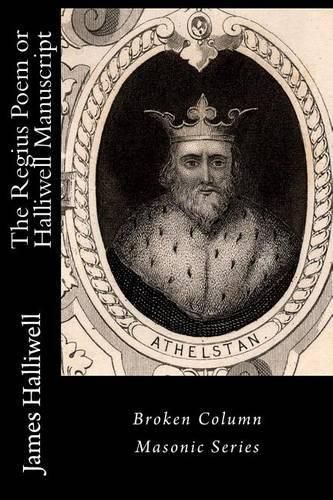Readings Newsletter
Become a Readings Member to make your shopping experience even easier.
Sign in or sign up for free!
You’re not far away from qualifying for FREE standard shipping within Australia
You’ve qualified for FREE standard shipping within Australia
The cart is loading…






The Regius Poem, also known as the Halliwell Manuscript, is a long series of rhyming couplets that make up what is thought to be the earliest of the Old Charges of Masonry. It was discovered in the British Museum by James O. Halliwell in 1838. While sometimes thought to have been written during the reign of King Athelstan (924-940 A.D.), the document actually dates to the late 14th century. Whether it is a derivative work based on a separate manuscript from Athelstan’s time is unknown. However, the Regius Poem is the cornerstone of the Legend of York, which is important in Masonry even today. This manuscript also outlines how Masons should act toward each other and toward the civil magistrate. It also talks about the history and philosophy of the order of Masons. Any Mason interested in the history of the Art should read this document and see how it compares to the various rules their grand lodges lay out for government of a lodge.
$9.00 standard shipping within Australia
FREE standard shipping within Australia for orders over $100.00
Express & International shipping calculated at checkout
The Regius Poem, also known as the Halliwell Manuscript, is a long series of rhyming couplets that make up what is thought to be the earliest of the Old Charges of Masonry. It was discovered in the British Museum by James O. Halliwell in 1838. While sometimes thought to have been written during the reign of King Athelstan (924-940 A.D.), the document actually dates to the late 14th century. Whether it is a derivative work based on a separate manuscript from Athelstan’s time is unknown. However, the Regius Poem is the cornerstone of the Legend of York, which is important in Masonry even today. This manuscript also outlines how Masons should act toward each other and toward the civil magistrate. It also talks about the history and philosophy of the order of Masons. Any Mason interested in the history of the Art should read this document and see how it compares to the various rules their grand lodges lay out for government of a lodge.